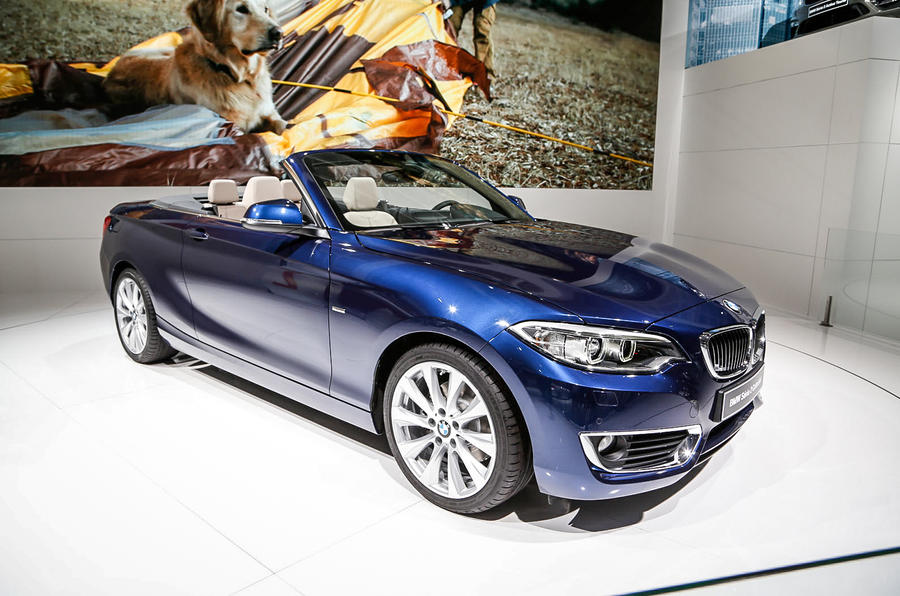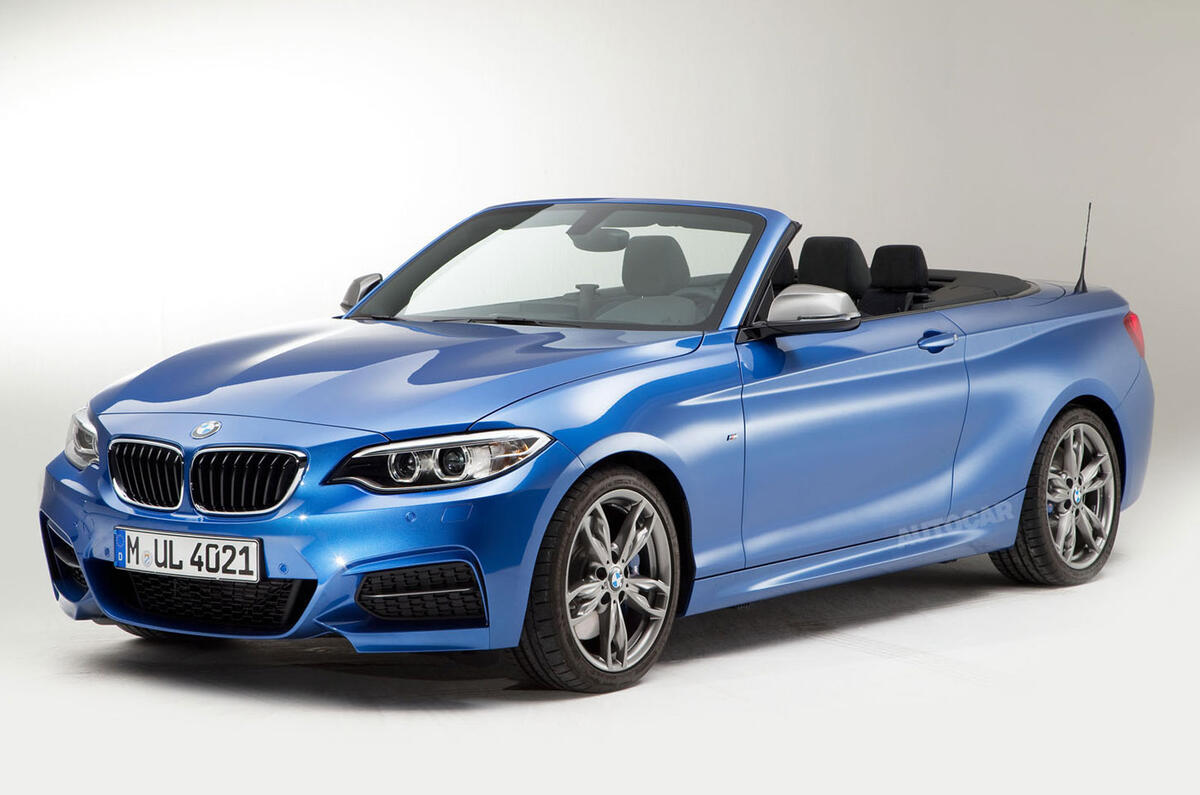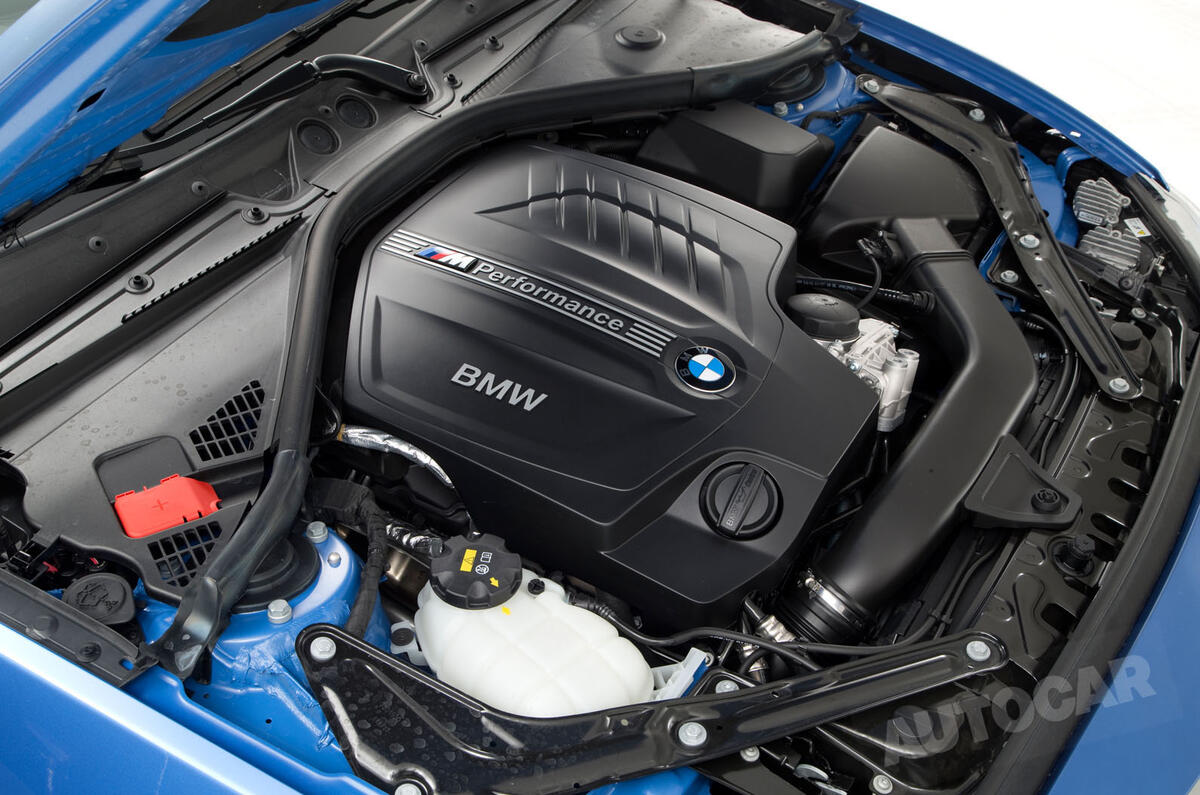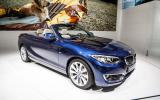This is the new BMW 2 Series convertible, a more “grown-up and prestigious car” than the 1 Series convertible it replaces, according to the Munich company’s chiefs.
Unveiled at the Paris motor show, the soft-topped rear-drive convertible is the successor to the BMW 1 Series convertible, which has sold more than 130,000 units around the world.
The new 2 Series convertible is on sale now with prices starting at £29,180 for the entry-level 220i Sport, rising to £37,710 for the performance-oriented M235i. First deliveries are expected in February 2015.
The 2 Series convertible has the same footprint as the fixed head 2-series, and is bigger in every dimension than 1 Series – it is 72mm longer at 4432mm, 26mm wider at 1774mm and has a wheelbase that is 30mm longer at 2690mm. The front and rear tracks have been extended by 41mm and 43mm respectively.
BMW says the increase in size makes for easier entry and exit from the car for rear passengers, and greater luggage capacity. The volume of the latter has increased by 30 litres to 335 litres with the roof up; when the top is folded, the boot space is 280 litres. The boot is also 35mm wider at its widest point compared to its predecessor.
The rear seat backrest can be folded using a lever in the luggage compartment. The rear can be specified with a load-through hatch that is much bigger than the one featured on the 1 Series, at 450mm wide by 246mm high.
Unlike the larger 4 Series convertible, which has a retractable hard-top, the new 2-series has fabric roof. As well as saving weight and cost on a car that is sold at a lower price point, it is more practical on the smaller car, because the metal roof and its operating mechanism requires more width than the rag-top and accommodating it could compromise the design appeal of the car.
The roof automatically opens and closes in 20 seconds at the push of a switch on the centre console, at speeds of up to 30mph. The roof’s folding mechanism has been carried over from the 1 Series, but a four-layer fabric top is new and features additional insulation and greater acoustic comfort. This has resulted in a reduction of interior noise by five decibels for front seat passengers and 7 decibels in the rear.
The 2 Series convertible weighs about 150kg more than the equivalent coupé model due to the roof mechanism and the extra chassis reinforcement in the side panels. Torsional rigidity of the body is said to be approximately 20 per cent stiffer than the 1 Series convertible.
Four engine variants will be offered, all of which are more powerful yet on average 18 per cent more frugal than the units offered in the 1 Series convertible.


















































































Add your comment
The style of the E36 was far
And with engines!
Same again....
Apart from Mercedes who attempts to differentiate their models without losing the corporate identity all the above mentioned gets away with the German engineering myth....
But is it just Audi, BMW etc?
Same size as an e36